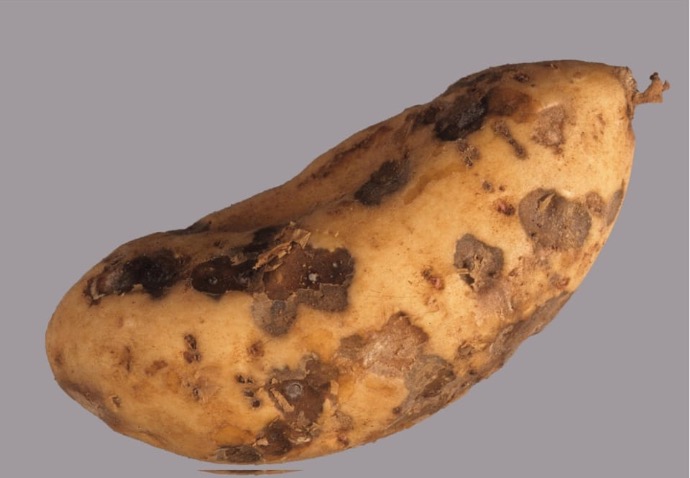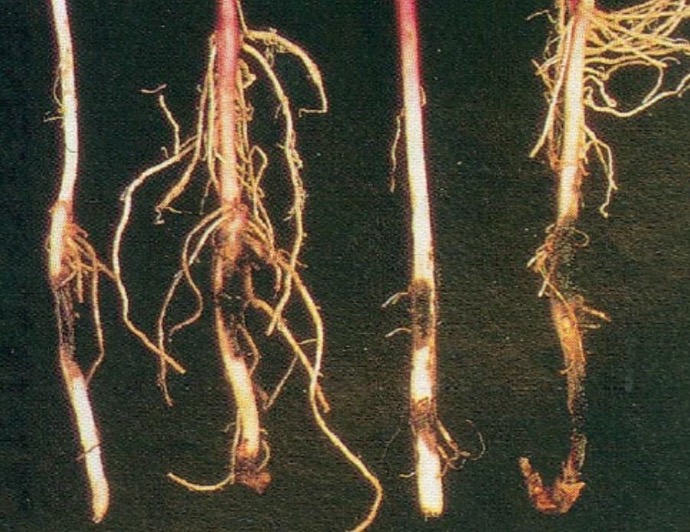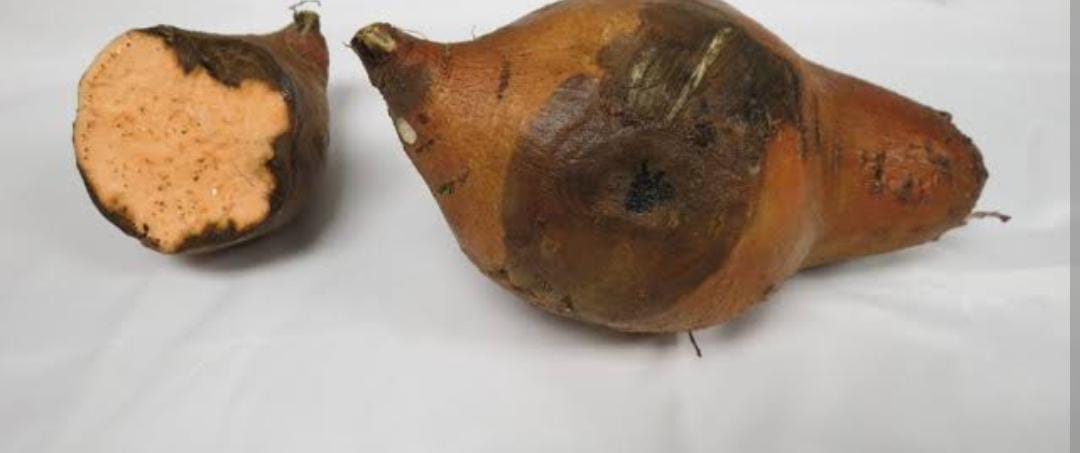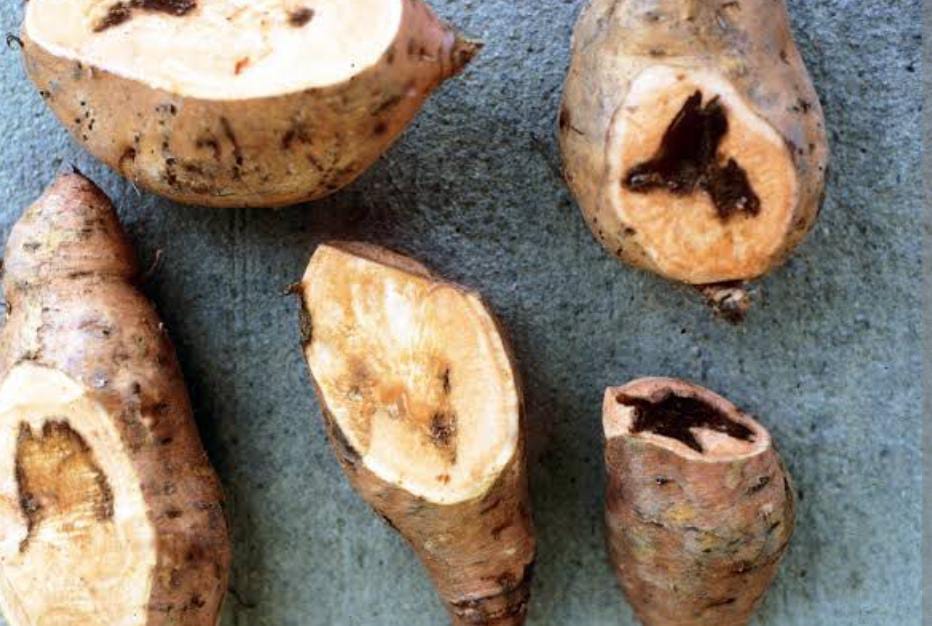Sweet Potato Leaves Plant
Perennial vine to 3 m, Sweet Potato yields edible, nutrient-rich leaves. South American native, thrives in heat. Edible and medicinal, ideal for stir-fries or soups.
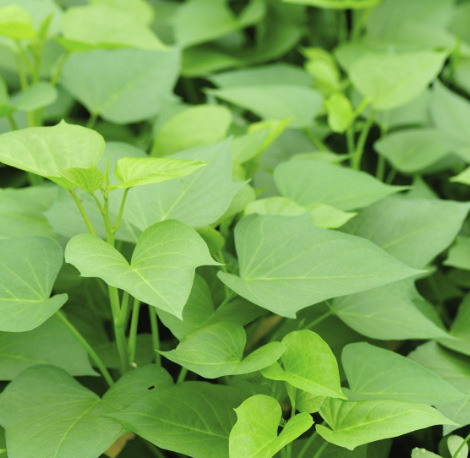
Habit
Perennial vine
Height
1-3 m
Growth
Fast
Soil
Well-drained, fertile
Shade
Full Sun
Moisture
Moderate
Edible
Yes (leaves)
Medicinal
Yes (antioxidant)
Origin
South America
Climatic Condition
Tropical, Subtropical
Temperature (°)
20-35
Humidity (%)
50-70
Potting media
Loam+Compost
Fertilizers
NPK(5:10:10)
Watering
Every 2-4 days
Plant Weight
~0.5-2 kg
Flowering Time
Summer
Soil Ph level
6.0-7.0
Water Ph level
6.0 - 7.0
Soil EC
0.5-1.5 mS/cm
Yield Per Plant
~0.5-1 kg leaves
NPK ratio
5:10:10
life Span
1-2 years
Health Benefits
Vitamin A, antioxidant
Suggested Grow Media or Potting Mix ?
50% loam, 30% compost, 20% sand
Suggested Fertigation/Fertilizers
5:10:10 weekly
Common Diseases and Remedies
Black rot , bacterial soft rot
Dark brown spots , black streaks on roots
Crop rotation, remove infected leaves
HEALTH BENEFITS
· High in fiber, promoting digestive health
· Rich in beta-carotene, improving vision and skin health
Helps regulate blood sugar and boosts immunity
What Is Sweet Potato?
Sweet potato is a dicotyledonous plant belonging to the morning glory family (Convolvulaceae). The large, starchy, and sweet tuberous root is used as a root vegetable. Young shoots and leaves are sometimes eaten as vegetables.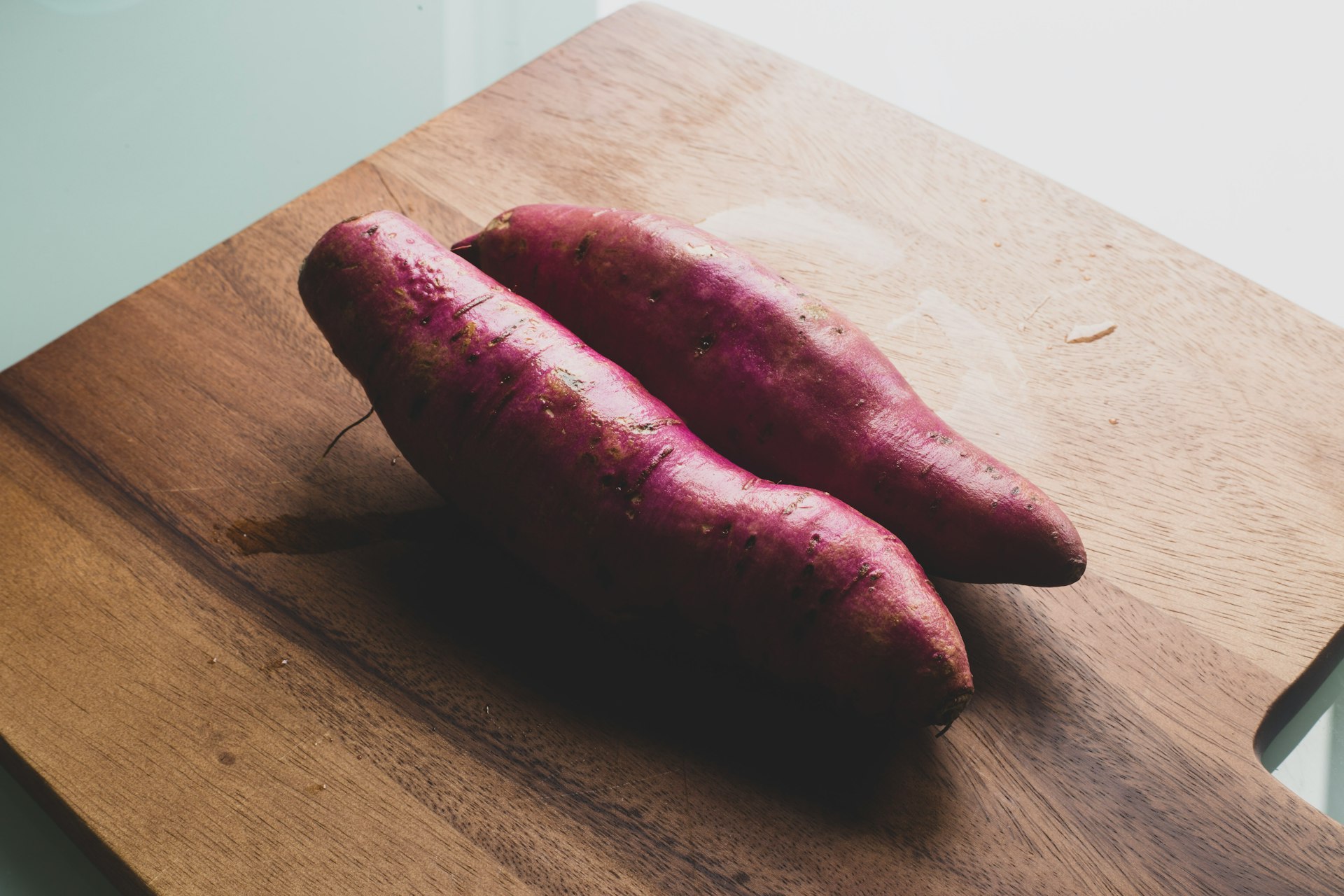
What Are The Different Types Of Sweet Potato
Co 3, Co CIP 1, Sree Nandini, Sree Vardhini, Kiran, Sree Bhadra, Sree Rethna, Gori, Sankar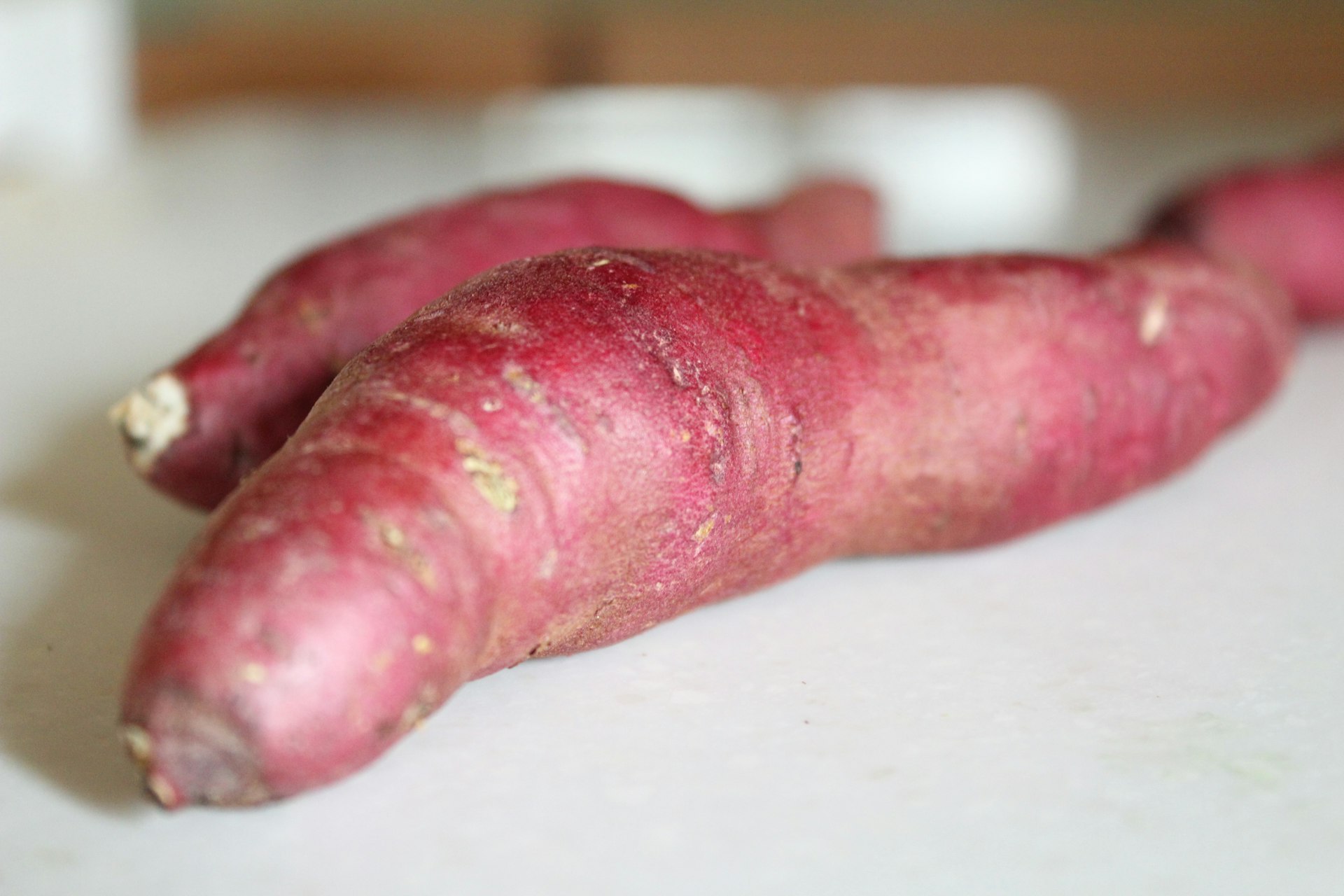
How To Care for Sweet Potato
Location
Use organic sweet potato products. Fill a container with lukewarm water. ...Take four toothpicks and insert them into the sweet potato.
Sunshine
Sweet potatoes grow best in light, sandy soils, but also do well in heavier soils with a high clay content and rich organic matter.
Soil
Sweet potatoes grow best in well-drained, light, sandy or silty loam. floor. Fertile, heavy soils will produce large quantities of low-quality roots, while very poor, light, sandy soils will generally produce low yields of high-quality roots.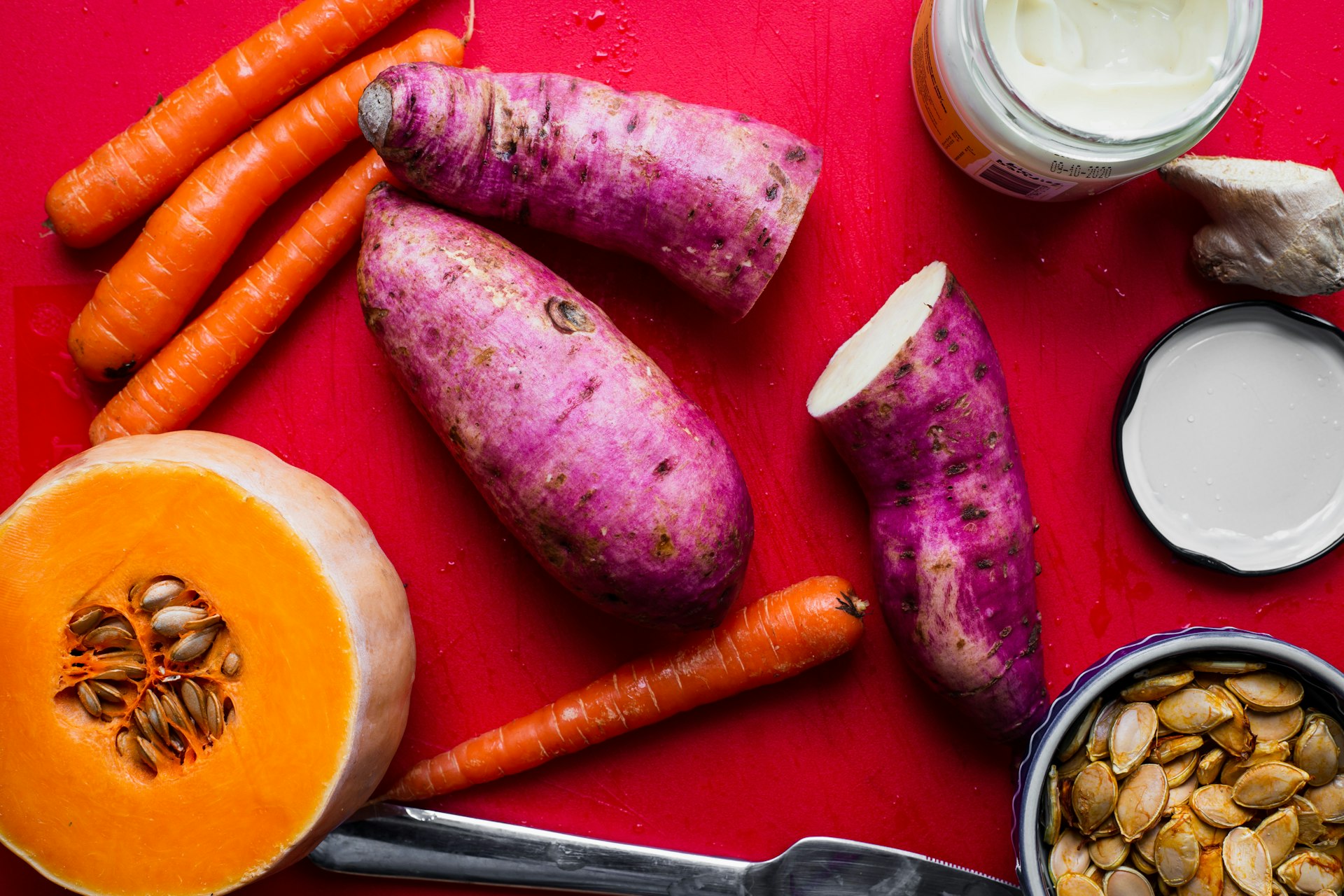
Nourishment
Apply 25 t/ha based on fiscal year standards, 20:40:60 kg NPK/ha as a base, and 20:40:60 kg NPK/ha after 30 days. When applying 20 kg/ha of Azospirillum, apply only 2/3 of the N dose. N and P are preferably applied in the form of DAP.
Issues
Sweet potato problems include nitrogen, sulfur, phosphorus, magnesium, potassium, calcium, and iron deficiencies. Sweet potato problems include root and stem diseases, field problems such as storage rot.
What Are The Benefits Of Sweet Potato
Promotes digestion
Helps manage diabetes
Helps prevent cancer risk
Helps minimize heart health risks.
Can improve brain function
Can strengthen immune system
Helps improve your skin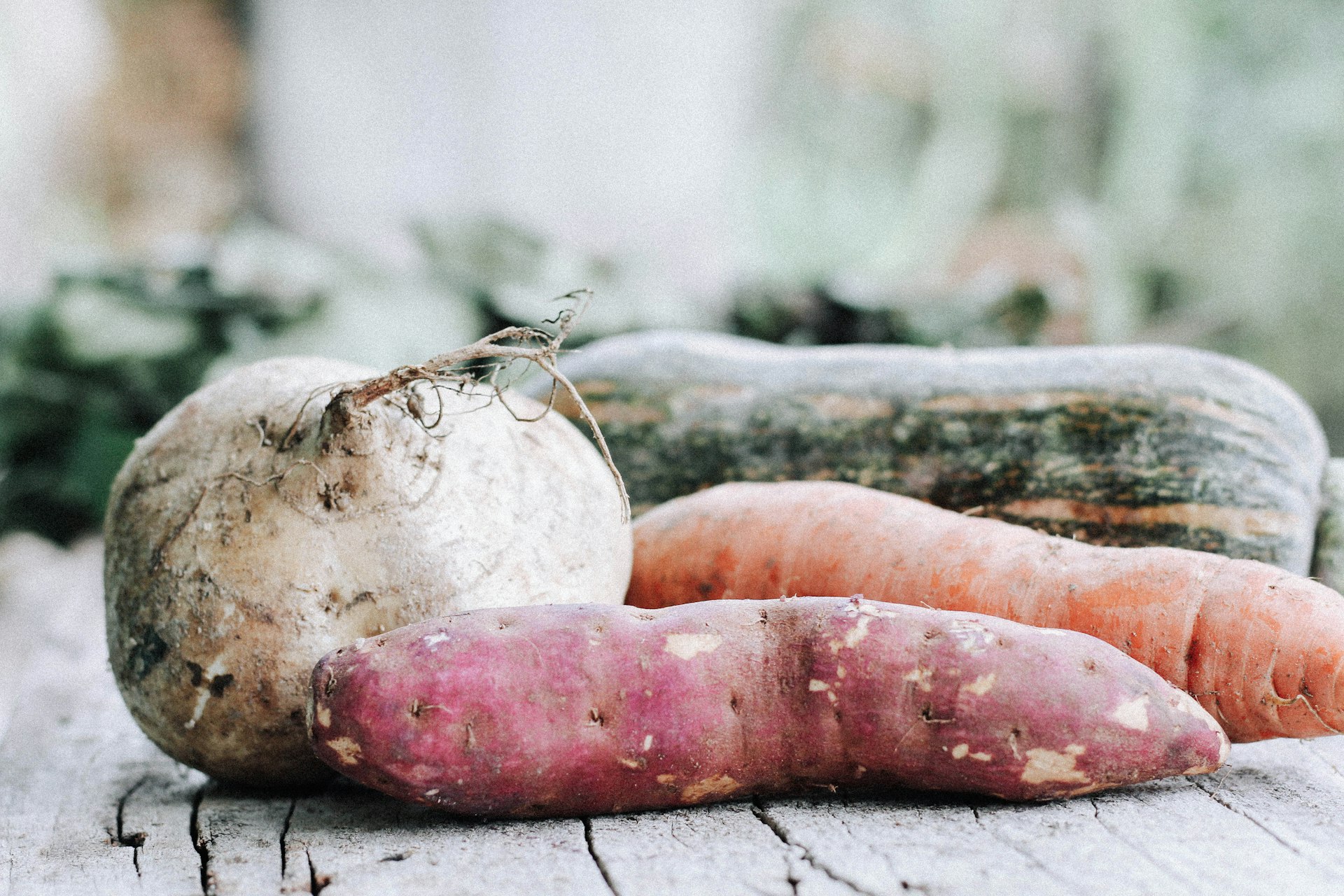
FAQs About Growing Sweet Potato
Are there any downsides to sweet potatoes?
Sweet potatoes contain high amounts of oxalate, which can increase your risk of calcium oxalate kidney stones. Sweet potatoes contain beta-carotene, which, if consumed in excess, can cause hypervitaminosis A (vitamin A toxicity), where excess vitamin A accumulates in the liver.
What are the weaknesses of sweet potatoes?
High pressure from pests and diseases. Four. Soil quality is poor. 5. Weak connections with technology sources, markets, and commercial users. A challenge for the sweet potato industry is the lack of suitable high-yielding, high-starch planting materials.
What is the disease of sweet potatoes called?
Fusarium wilt (stem rot) Fusarium oxysporum f.sp. Batatas
Gray mold Botrytis cinerea Botryotinia funeliana [teleomorphic]
Java black rot Lasiodiplodia theobromae = Diplodia gossypina
Mulch Choanephora cucurbitarum
What are the pests of sweet potatoes?
Sweet potato roots can be damaged by a variety of soil insects, including sweet potato weevils, rootworms, wire beetles, larvae, white leaf beetles, and flea beetles. Sweet potato larvae are the only insects that tunnel into roots. Other soil insects feed on the developing root surface
What pests and diseases affect sweet potatoes?
Among pest and disease constraints, sweet potato leaf beetles (Cylas spp.) and viral diseases are probably the biggest cause of yield loss, but leaf-eating insects such as sweet potato butterflies (Acraea acerata) are critical during outbreaks. may cause significant losses.
